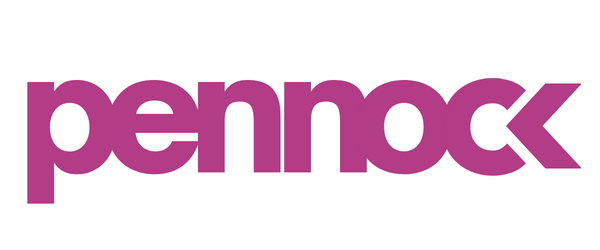The Pennock Knockdown EP 26 | How Ivonna Young’s Lavender Agency Blends Strategic Marketing, Collaboration, and Agility for Modern Brands
Watch or Listen to Episode 26 of The Pennock Knockdown.
On Apple, Spotify and YouTube.
The direct-to-consumer (DTC) beauty and lifestyle sector is a whirlwind of innovation and competition. In an era when uncertainty is often the only constant, brands need more than creativity - they need agility, sharp data instincts, and genuine connection with consumers. In the latest episode of The Pennock Knockdown, co-hosts Nikki and Ivonna Young—founder of The Lavender Agency—dove deep into what it takes to succeed in this dynamic landscape. Let’s unpack the key takeaways and actionable strategies for modern marketing leaders.
1. From Corporate to Fractional CMO: Agility Is the New Advantage
Before launching Lavender Agency, Ivonna Young led marketing teams at both major corporations and smaller, family-run companies. Through this experience, she identified a critical gap: small and mid-sized businesses desperately needed high-level marketing leadership, but in a format that was flexible and sustainable. Enter the fractional CMO model.
Ivonna’s approach centers on embedding C-suite marketing strategy for brands that may not be ready or able to hire a permanent Chief Marketing Officer. Her “quarterly marketing strategy” starts with deep discovery: analyzing historical data, mapping customer journeys, and building clarity around SMART (Specific, Measurable, Achievable, Relevant, Time-Bound) objectives. This tailored, hands-on involvement ensures every engagement is ready to pivot with the client's stage of growth or the broader market.
2. The Collaborative Oversee-and-Activate Approach
One aspect that sets Lavender Agency apart: they focus solely on strategy and leadership, not on executing every granular campaign. Execution is left to in-house teams or specialized external partners, whom the agency helps source and guide.
This lets Lavender Agency concentrate on what matters most: identifying high-impact channels, filling talent gaps, and ensuring every marketing effort aligns with the overall business objective. This holistic view allows their clients - ranging from $2 million to $50 million in revenue—to scale smartly, starting lean and layering on complexity only as ROI and capacity allow.
3. Scaling Your Marketing Stack as You Grow
Ivonna highlights a practical philosophy: “the fewest amount of right answers” at every growth stage. For DTC brands, this means being laser-focused on budget, capacity, and current goals, rather than spreading resources thin across every shiny new channel.
Early on, foundational tactics that deliver predictable ROI win the day. As brands scale towards bigger milestones, the marketing stack expands intentionally—paid, earned, and owned strategies are balanced based on real, recent data. Midyear, the strategy is always revisited: “Hit pause, look at the last six months of results, and optimize before the critical Q4 season.”
4. Seasonality & Data-Driven Pivots
At the halfway point of the year, Ivonna recommends a deliberate data review. Which campaigns delivered? Where are the gaps? What trends can be exploited—such as graduation, summer refreshes, or holiday prep—to boost engagement and sales?
The key: use historical insight to test new ideas and double down on what’s working. This type of agility is especially crucial for smaller brands that must maximize every marketing dollar.
5. The Power and Pitfalls of Brand Collaborations
Collaborations are a recurring theme in DTC, but not all partnerships pay off. Ivonna sheds light on both sides:
- What Works: The best collaborations highlight each brand’s unique strengths while meeting shared objectives. For example, fusing iconic prints with premium product design can create something unexpected for both audiences, as seen with Marimekko and Mansur Gavriel.
- Common Pitfalls: Failed collaborations often stem from overlooking details at the negotiation stage - assortment problems, unclear marketing responsibilities, or mismatched objectives. Without thorough upfront alignment, even the most promising partnerships can underdeliver.
When done right, collaborations allow even small brands to tap into larger audiences, penetrate new markets, and experiment with limited risk.
6. Adapting to Uncertainty: Lean Operations and Owned Channels
With shifting regulations (tariffs), platform instability (TikTok bans), and macroeconomic uncertainty, Ivonna champions a “control what you can” mindset. Now more than ever, brands should focus on strengthening owned channels like websites and email lists, running lean operations, and preparing communication strategies for unexpected headwinds.
Smart Growth for the Modern DTC Brand
The future belongs to brands that combine strategic rigor, creative collaboration, and relentless adaptability. Whether bootstrapping to their first $5 million or optimizing at scale, DTC marketers need to prioritize data-driven decisions, strong internal frameworks, and authentic partnerships to thrive amid constant change.
Want more strategic insights? Follow Ivonna Young at The Lavender Agency or listen to the full episode of The Pennock Knockdown for hands-on growth tactics straight from the field.
